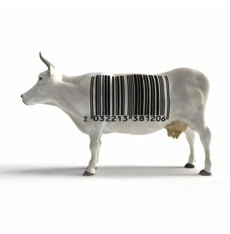
A common language is only useful if adopted
By Judith Kirkness
Business Operations Facilities Maintenance Food Safety Bake & Snack Food Beverages Confectionery Dairy Fruit & Vegetables Meat &Poultry Pet Food Seafood Specialty Foods traceabilitySupply chain traceability has a common language available, but if people won’t make the investment to use the language, miscommunication will continue.

When someone doesn’t speak the same language as you, important information can be lost in translation when trying to communicate. While GS1, a non-profit trade run organization, has provided a global language of communication for business, we struggle with the goal of supply chain traceability because too many companies have not adopted the standard. GS1 is the organization that grants GTIN codes (formerly called UPC) for retail items and operates the ECCNET registry of retail and trade units.
Far too many raw materials suppliers offer lot number information printed only in a human readable format. Even if a processor has a handheld warehouse management system that can scan barcodes, they won’t be able to use that system for traceability without re-labelling those items. Scanning can be a very efficient way to control the movement of items within a facility and along a supply chain. But it is only an advantage when you can capture the information you need with a minimum of user touch points, thereby reducing the opportunities for human error. One-scan product movement is possible with the GS1-128 barcode format, which allows for multiple pieces of information to be encoded within a single barcode.
In this example, the segments (called AIs, or application identifiers) included are 01 (GTIN), 17 (expiry date) and 10 (lot number). One scan can grab all three pieces of information. More than 100 segments exist, including segments for country of origin, weight and size. For a list of AIs, click here.
While many major retailers have label requirements for items they purchase, often their traceability requirements are linked only to the skid level. At the trade level, Target Canada and Loblaw request detail of what items, quantities and lot numbers are on each skid delivered to their distribution centres, but don’t require GS1-128 labelling of those master cases.
Processors often order master cases permanently printed with the GTIN case code as a barcode. While they may use a box marking device when packing the cases to print a date or lot code on each case, it is often not printed as a barcode or is separate from the item and expiry information. This means that if the retailer must break your skid to case pick for stores they could lose track of any traceability information that was provided about the skid, and they often don’t track which lots they send each store. In a recall, the retailer has to ask stores to check their shelves for affected lots, which adds to the cost of recalls for everyone.
If processors were to adopt GS1-128 barcodes (or databars, or tags with application identifiers) for trade units, including the important segments for traceability, it could enable retailers to adapt their software systems to use one scan to capture and track the lots to stores.
If ingredient suppliers were to adopt the standard on the raw materials they supply to processors, those processors with GS1-128 capable warehouse management systems could scan those labels to populate their inventory with item and lot information in a single scan. Until that time, processors must re-label raw materials at receiving if they want something useful to scan around their warehouse and to production. This slows down the receiving process but allows for faster movement of the product from that point forward.
Processors need to ask their suppliers for one-scan labels as they adopt the technology to use that information. Similarly, they need to provide that same standard on items they produce. Supply chain traceability has a common language available, but if people won’t make the investment to use the language, miscommunication will continue.
Judith Kirkness is the author of The Traceability Factor, founder of Traceability Matters and a Principal Consultant at Minotaur Software. Contact her at judith@traceabilitymatters.com
Print this page